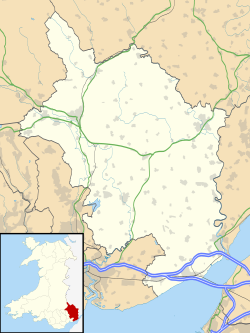| St Cenedlon's Church | |
|---|---|
| Church of St Cenedlon (or Cenhedlon) (aka Rockfield Church) | |
 | |
| 51°49′48″N2°45′13″W / 51.83°N 2.7535°W | |
| Location | Rockfield, Monmouthshire |
| Country | Wales |
| Denomination | Church in Wales |
| Website | Rockfield Church |
| History | |
| Founded | Medieval / restored 1859-1860 |
| Associated people | Revd Tim Dack (Priest in charge) |
| Architecture | |
| Functional status | Active |
| Heritage designation | Grade II |
| Designated | 27 November 1953 |
| Architect(s) | John Pollard Seddon & John Prichard |
| Architectural type | Church |
| Style | Gothic Revival |
| Specifications | |
| Materials | Body of church: rubble Roof: slate |
St Cenedlon's is a parish church in the village of Rockfield, Monmouthshire, Wales. The dedication to St Cenedlon is unusual and the history of the saint is obscure. Some sources suggest that she was a daughter of Brychan king of Brycheiniog while others identify her as the wife of King Arthfael ab Ithel, king of Glywysing. The existing church dates from the Middle Ages but only the tower remains from that period. After the English Reformation, the surrounding area of north Monmouthshire became a refuge for Catholics and Matthew Pritchard (1669-1750), Roman Catholic bishop and Vicar Apostolic of the Western District is buried at the church. By the mid-19th century the church was in ruins and a complete reconstruction was undertaken by the ecclesiastical architects John Pollard Seddon and John Prichard in around 1860. St Cenedlon's is an active parish church in the Diocese of Monmouth. It is designated by Cadw as a Grade II listed building.




